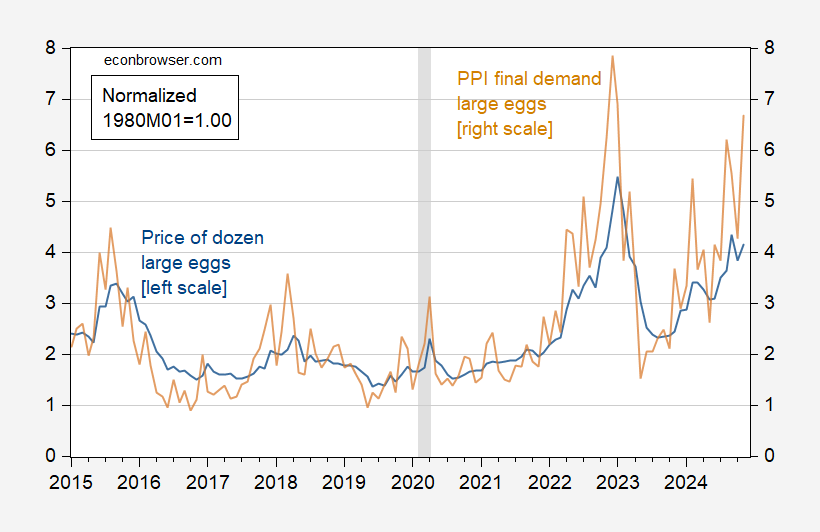Eggs

Image Source: Pexels
Bloomberg points out eggs were big in the PPI, accounting for 80% of the y/y rise (egg prices spiking due to avian flu). I wondered what eggs accounted for in the food at home component of the CPI.
Didn’t have the CPI subcomponent for eggs handy, so I took the BLS not-seasonally-adjusted price of a dozen large grade A eggs, seasonally adjusted using moving (geometric) average and decomposed the CPI-food at home cumulative increase since January 2024.
Figure 1: CPI-food at home (s.a.), contribution from eggs (brown bar), contribution from rest-of-food-at-home (blue bar), calculated using log differences. Source: BLS via FRED, and author’s calculations.
This indicates food-at-home (aka “groceries”) would be pretty close to flat in 2024 were it not for eggs.
Calculations:
- 2023 weight for eggs in CPI: 0.178%
- 2023 CPI-food at home weight in CPI: 8.072%
- Implied 2023 weight of eggs in CPI-food at home: 2.205%
For comparison, weight of eggs in PPI (final demand): 0.07%
Here’re consumer prices for a dozen eggs vs. PPI (final demand) for large eggs.
Figure 2: Dozen large eggs (blue, left log scale), and PPI (final demand) large eggs (tan, right log scale), both normalized to 1980M01=1. NBER defined peak-to-trough recession dates shaded gray. Source: BLS via FRED, BLS, NBER, and author’s calculations.
More By This Author:
U.S. Tariff Pass-Through On Chinese Imports Is HighInstantaneous Core And Supercore Inflation For November
The Likelihood Of A Plaza Accord 2.0





